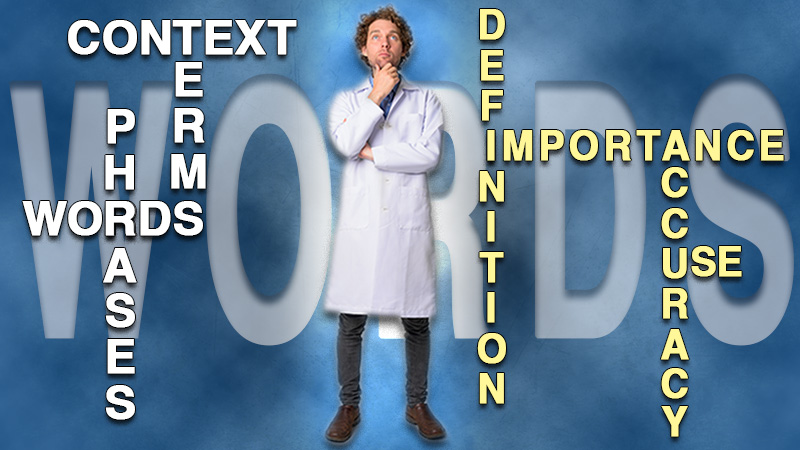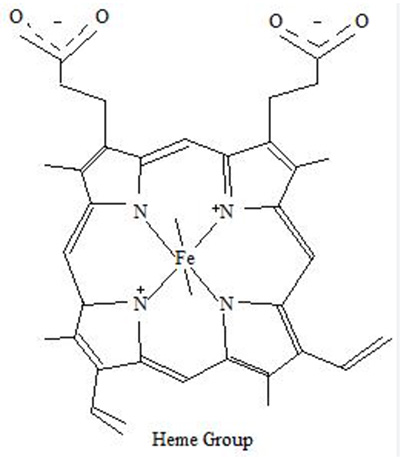
Practice Perfect 838
Words: What’s the Big Deal?
Words: What’s the Big Deal?

The other day, I was in clinic with one of my trainees. While seeing a patient together, they mentioned a word. That word, heme, was used in the context of, “There’s no heme in the callus.” The use of this word in this context was bothersome for its inaccuracy.
“What ‘heme’ are you talking about?” I asked, almost sarcastically. “Is it just the heme part of blood you see? Wow, you have better eyes than me,” I joked.
I smiled to lighten the mood; I didn’t want my trainee to be embarrassed by a commonly misused word that I’ve heard for years from many trainees. I then quickly explained – perhaps as much to the patient as to the trainee - that heme is the iron-containing part of hemoglobin and just a part of the blood we’d actually seen in the patient’s skin.
As we know, this is the oxygen-carrying molecule in our red blood cells, bound to the four-protein complex globin. It’s a striking molecule, like a burnt-umber-colored flower with its pedals open to interact with the world. I don’t actually know what color heme is – or if it even has a color – but after growing up in Arizona and seeing the incredible red rocks of the Sedona area caused by iron oxide in the dirt, I can’t help but picture heme the same way. Given that heme is a porphyrin, it absorbs visible light, so actually it is colored. However, given that its name is Greek for porphyra, the color is actually purple. Regardless, my mind keeps running back to a vision of this molecule changing colors each time the iron is oxidized by the temporary oxygen attachment and then reduced by release of oxygen during metabolism. It’s almost as if this molecule is breathing in and out to match our pulmonary respiration.

I reminded my learner that they were talking about blood in the skin, more appropriately termed intraepidermal hemorrhage (assuming, of course, the blood is in the epidermis). Our clinical encounter ended with my trainee politely saying they understood, but I was equally dissatisfied with my reaction and wanting to stay rigid with my detail orientation.
What’s the big deal, anyway? Why torture my resident, and likely my patient, with this diatribe about blood?
Because words are important.
What we say and how we say it is important. Words have a power beyond what we might pay attention to on a daily basis. I’ve seen this power demonstrated in so many ways. Say the right words and a smile comes out, gleaming eyes twinkling with mirth. Alternatively, say the wrong words and those same lips thin in anger while the eyes take on an altogether different glint. The right words can diffuse a tense situation while a well-placed joke can demolish a relationship with someone’s version of the “truth” said in haste.
I’ve spent years as a teacher with another word-related pet peeve that most people would likely find annoying. The word – or, more accurately, the concept – is the vassal principle. As a quick refresher, the vassal principle states that in a traumatic situation, where there is more than one fracture, when the doctor reduces the primary fracture, the secondary fractures will automatically relocate. This occurs due to continued ligamentous attachments between the associated bones. Reduce the primary fracture and ligamentous attachments between the bones will pull the other fracture back into its own alignment like a child pulling a wagon. This is termed ligamentotaxis, itself a lovely word, concise and even a little musical.
Anyone who has taken care of a traumatized foot or ankle has witnessed this first-hand on post-reduction radiographs, and I have to say it’s very satisfying. A common example is in patients with multiple metatarsal head fractures that almost magically realign themselves when the doctor manipulates them. This concept is also highly important for what it tells us when the vassal principle does not work: the ligamentous connections are damaged or something is in the way, holding back those secondary fractures from reducing, a tug of war in which the rope has snapped.
And yet while this physical principle is so well known, it’s very common to hear the phrase used incorrectly. I’ve heard two primary ways to mispronounce the vassal principle. The first is Vassal’s principle, as in named by Dr Vassal, an eponym, and the second is a simple mispronunciation, as in the vassál principle, with the accent over the last syllable. Wrong!
Why am I all bent out of shape about this? Who cares, right? Does it change the reality of what’s happening with the patient? Not a bit. My beef with these errors is that I love the term because it is so artistically named. The vassal principle derives from historical feudalism in which the lord owned the land, and his (yes, always a male) vassals lived on the land and went to war when their lord called them to it. When the lord moved, the vassals went with him. Thus, the vassal principle of fractures. Isn’t that a creative name that so aptly describes what happens during primary fracture relocation? I don’t know who coined the term, but I must applaud them. Using the term incorrectly not only does disservice to a creative name but also robs us of an excellent mnemonic device.
As I sit in my office writing this editorial, I look outside at the sky and spy a hawk. It’s flying in graceful circles floating on the thermals of rising heat, languidly flapping its wings to keep aloft. It doesn’t seem to be going anywhere, just flying in circles, eventually slowly moving out of sight. It seems almost odd that this hawk, apparently flying nowhere with a purpose, is much how I feel when it comes to vocabulary, terminology, and the use of words: beautiful grace underappreciated and overlooked by the hurried pace of life. Take a moment to savor the dynamism and splendor of words and all they have to offer.
Best wishes.

Jarrod Shapiro, DPM
PRESENT Practice Perfect Editor
[email protected]































Comments
There are 0 comments for this article